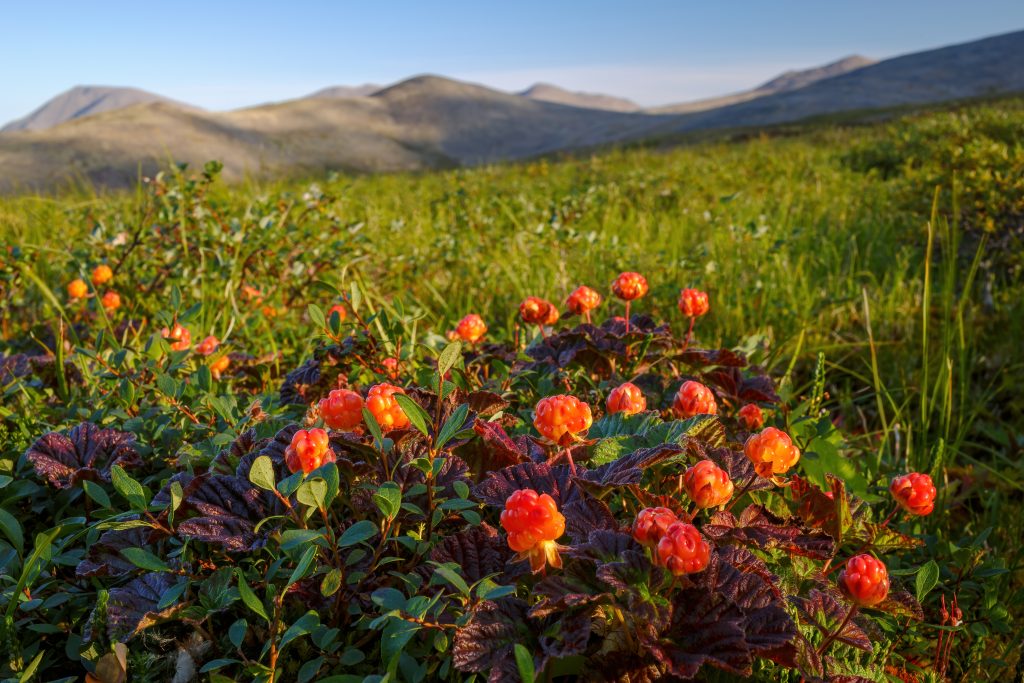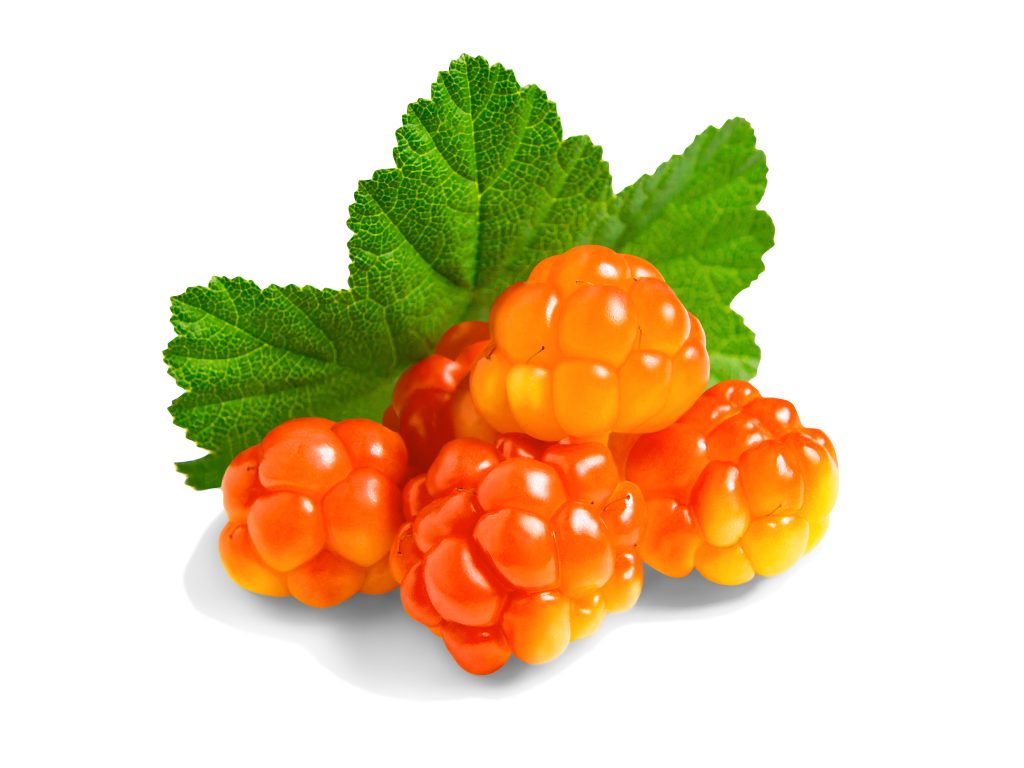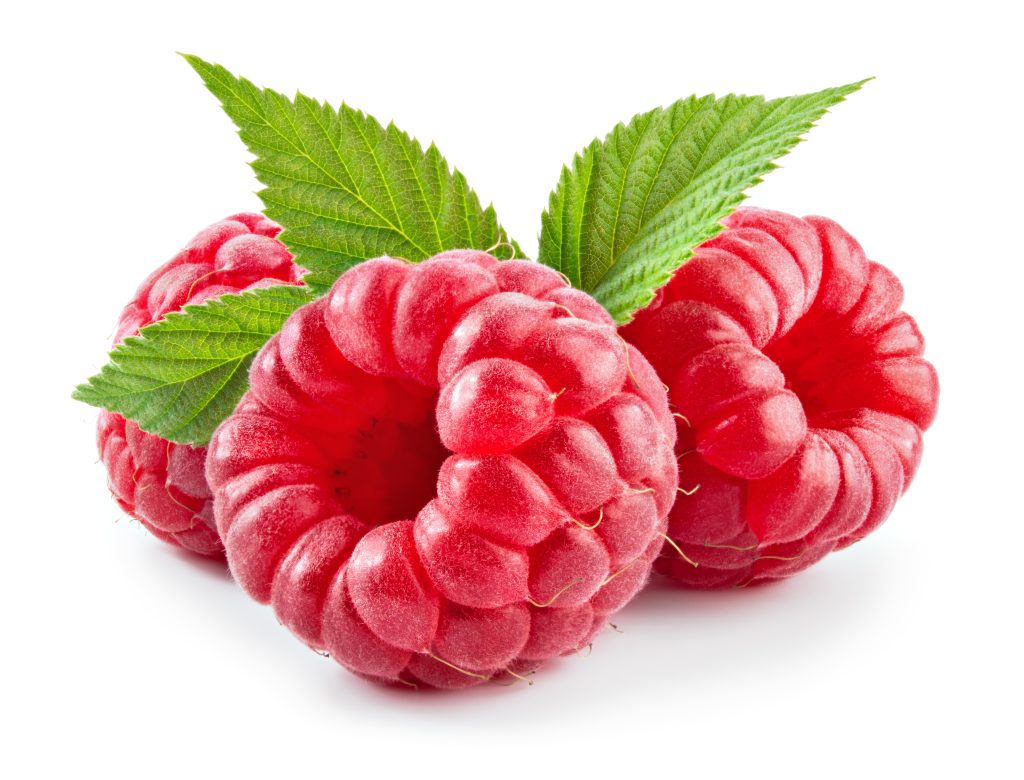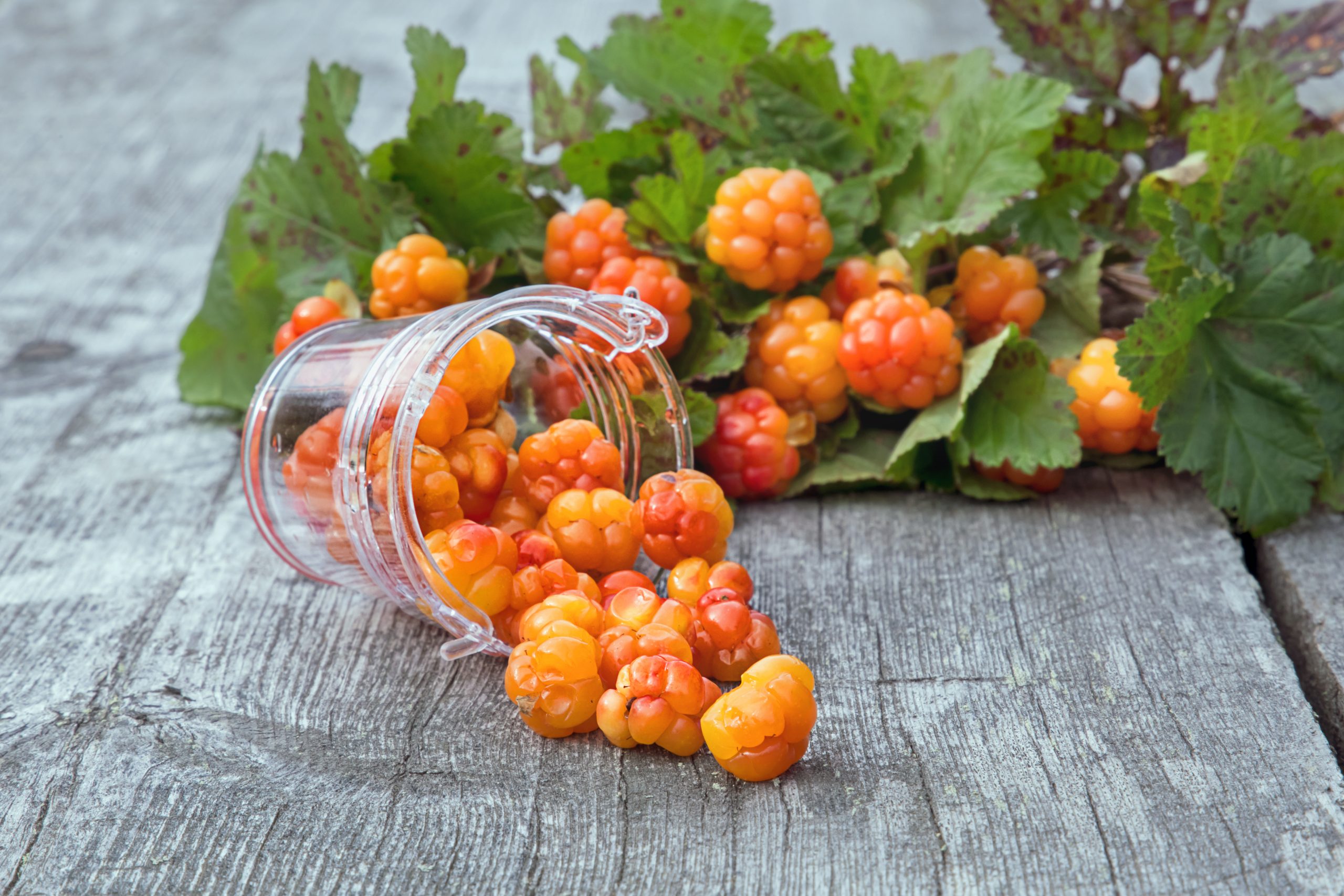Cloudberries are rare, raspberry-like berries called “the gold of the forest.” They grow wild in Arctic European regions like Norway, Scandinavia, and Finland but also pop up in areas like Russia and Canada. They’re sweet and tart and can be enjoyed right off the vine or made into tasty treats and jams.
Table of Contents
What is a Cloudberry?
The cloudberry (Rubus chamaemorus) is a cold-weather fruit with many names. It’s also called salmonberries, yellowberries, bakeapple, or Malka. They grow wild in arctic regions like Norway, Finland, Canada, Scandinavia, Russia, and cooler areas of Minnesota.
As a wild fruit that blooms primally in Nordic wetlands and bogs, these flowering plants bloom in the summer and continue to ripen to a beautiful golden color in the fall. If you want to get your hands on some tasty cloudberries, the best way is to scavenge for them, just like the Vikings!
Cloudberries look like small raspberries or blackberries, and their flavors are similar. A perfectly ripe cloudberry is tart, like a blackberry. When they become overly ripe, the flavors shift to a sweet, creamy custard.
The History of Cloudberries
Seafaring Vikings loved cloudberries not only for their flavor but their medicinal purposes. Because the cloudberry is rich in Vitamin C, the Scandinavian Vikings used it to help fight off scurvy. There are mentions of the cloudberry in Arabic literature, detailing how ships of Vikings that arrived in the Mediterranean brought cloudberries on their boats.
The term cloudberry pays homage to its rarity. These berries are scarce and considered a golden secret of the Arctic. They only grow in frigid climates, high on frosty mountaintops.
The cloudberry grows in the clouds, hence its name. In Norwegian and Swedish countries, the cloudberry is often harvested in the autumn, frozen, and used in special holiday meals.

What Does a Cloudberry Taste Like?
The flavor of cloudberry is unique. You are met with familiar raspberry sweetness and a blackberry’s tartness when biting into a cloudberry. But there are more subtle notes hiding in there, too. With hints of mangoes, apricot, and passionfruit, it’s a berry-like no other. It’s often described as the perfect pairing of sweet and sour at the peak of ripeness.
The flavors of the cloudberry shift into someone completely different when it’s right over the edge of ripeness. When you bite into an overly ripe cloudberry, the sour notes disappear, transforming into creamy flavors like yogurt. It’s more sweet than tart, replacing its sharp acidity with a milky taste.
How to Tell When Cloudberry is Ripe
When shopping or foraging for cloudberries, here’s a quick way to tell if it’s perfectly ripe:
| Color | An unripe cloudberry has a soft, rosy red coloring. As the cloudberry matures into the autumn, the colors transform into a beautiful orange-red hue, similar to a sunset. |
| Firmness | Ripe cloudberries are soft and delicate, similar to a raspberry. If it feels soft in your hands and comes off the stem without much effort, it’s ready to eat. |
| Smell | When perfectly ripe, cloudberries are fragrant. If you smell the gentle sweetness of citrus, rose, and berry, it’s ripe. |
| Bruising | An overripe cloudberry is more prone to bruising, but the flavor is still delicious. It won’t be as tart, but the flavors shift from tart to creamy. |
Are Cloudberries and Raspberries Related?


Yes, cloudberries are related to raspberries, but they are two very different species of fruits. Raspberries and Cloudberries are both brambles and members of the Rosaceae family, but they are two distinct varieties of fruit.
Wild raspberries grow on brambles and produce multiple berries on a single plant. The cloudberry is much different. A single female plant has one flower, then matures into a cloudberry.
Pollination happens with a male plant pollinates a female plant to produce one single berry. Unlike Raspberries, the cloudberry plant grows only 4-12 inches tall.
Can I Eat Raw Cloudberries?
Eating a cloudberry fresh off the plant is one of the best ways to enjoy this rare berry. While they can be made into cloudberry jam and liqueur, the best way to enjoy cloudberries is to eat them right off the vine.
They are a wonderful sweet treat to enjoy in the fall, whether at the peak of ripeness or slightly overripe.
Cooking with Cloudberries
Here’s how to prepare cloudberries for fantastic recipes before storing them in the freezer for a special occasion.
1. Remove the stems from the cloudberry. If perfectly ripe, the stem should be able to be gently pulled away from the fruit.
2. Wash them. Place the cloudberries in a strainer, and run cool water over them. They are a gentle berry, so handle them with care.

A few cloudberry recipes to try out:
Multekrem: To recreate a classic Norwegian dessert, you must try Multekrem, which translates to cloudberry cream. It incorporates fresh cloudberry jam with heavy cream, vanilla extract, and a pinch of salt. It’s simple, but the cloudberries take this dessert to new heights.
Cloudberry Jam: Cloudberry jam is available at some supermarkets, but making your own at home is always better. This cloudberry jam recipe pairs fresh cloudberries with sugar and water for a jam that goes great on anything from toast, ice cream, and cheesecake.
Cloudberry Liqueur: If you are feeling a little boozy, this is the peak of Scandinavian delicacies! To avoid making your own, purchase Lapponia Lakka Cloudberry Liqueur from Finland’s finest cloudberries.
How to Store Cloudberries
If you have unripened cloudberries, you can place them at room temperature, where they will continue to ripen over the next few days. Once they are ripe, cover them in plastic wrap and place them in the refrigerator. They will remain fresh and ready to eat for up to one week.
In places like Finland, many locals freeze their cloudberries and thaw them for special holiday treats. To freeze cloudberries, place cleaned and prepared berries in a freezer bag or other air-tight container. You can store fresh cloudberries in the freezer for up to two years!
Nutritional Benefits of Cloudberries
In the days of Vikings, seafaring Vikings packed cloudberries along for the trip to help calm the symptoms of scurvy. And they were right! Cloudberries pack hearty doses of Vitamin C, which we know can help with scurvy.
While you may not be stuffing from scurvy, the high dose of Vitamin C in cloudberries can help boost your immune system, protect cells from free radicals, and help fight heart disease and cancer.
In addition to Vitamin C, cloudberries are a great source of Vitamin E. Vitamin E, much like Vitamin C, helps fight free radicals. A diet rich in Vitamin E can help your skin stay bright and vibrant.
Where to Purchase Cloudberries
These berries are rare, and tracking them down at your local grocery store is difficult. A cold-weather berry that grows in arctic tundras and boreal forests, the best way to get your hands on these berries is to bundle up and go foraging! But that’s not an option if you don’t live in cold climates.
The best way to track cloudberries is to head to local farmer’s markets or specialty stores. Harvest season for cloudberries is short- they bloom in June and are ready to harvest in July. Ideally, the best time to start your search is from late July through August.

